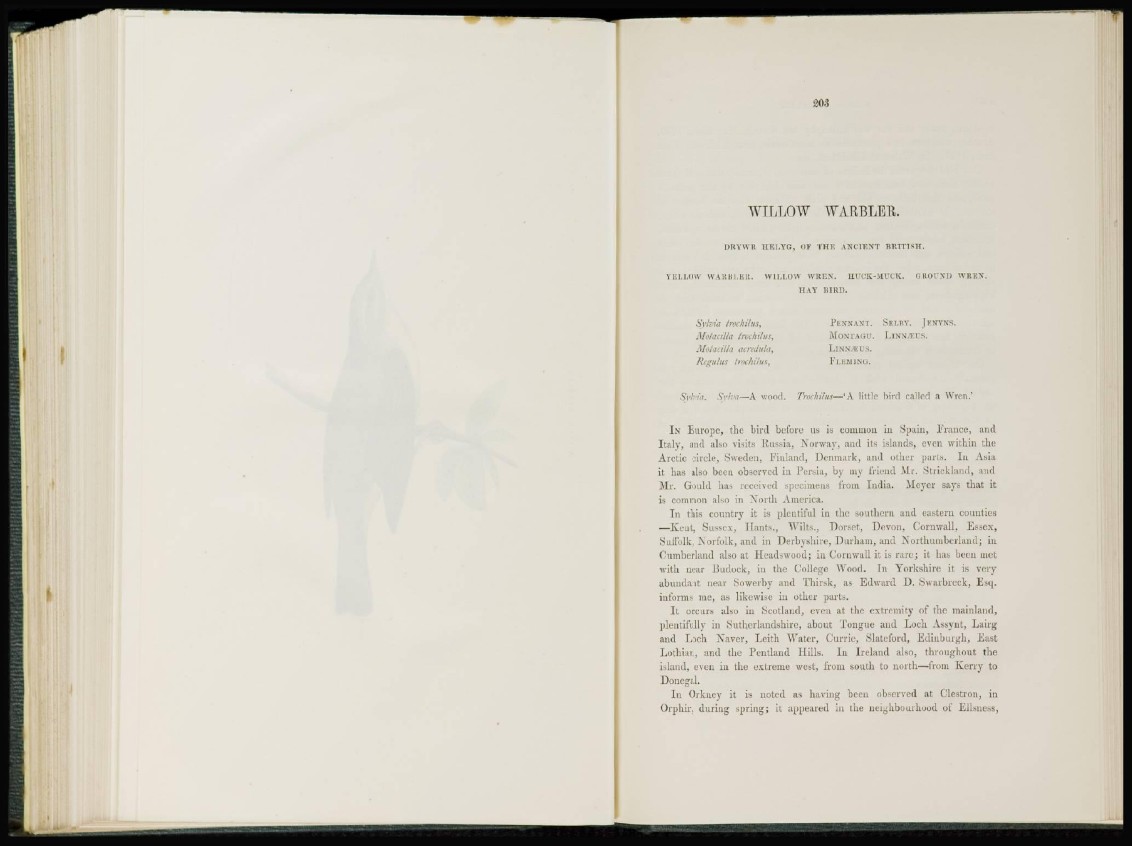
WILLOW WARBLER.
D R Y W R H E L Y G , OF T H E A N C I E N T B R I T I S H.
YELLOW WARBLER. WILLOW WREN. HUOK-MUCK. fillOI'M) Wit EN.
HAY BIRD.
Sylvia trochilus, PICNNANT. SKLBT, JENTNS.
Motacilla trochilus,
Motacilla acreditla,
Regulus trochilus,
MONIAGL'. LlNN^US.
LlNN.-EUS.
FLEMING.
Sylvia. Sytva—k wood. Trochilus—'A little bird called a Wren.'
I N Europe, the bird before us is common in Spain, France, and
Italy, and also visits Russia, Norway, and its islands, even within the
Arctic circle, Sweden, Finland, Denmark, and other parts. In Asia
it has also been observed in Persia, by my friend Mr. Strickland, and
Mr. Gould has received specimens from India. Meyer says that it
is common also in North America.
I n this country it is plentiful in the southern and eastern counties
—Kent, Sussex, Hants., Wilts., Dorset, Devon, Cornwall, Essex,
Suffolk, Norfolk, and in Derbyshire, Durham, and Northumberland; in
Cumberland also at Hcadswood; in Cornwall it is r a r e ; it has been met
with near Budock, in the College Wood. In Yorkshire it is very
abundant near Sowerby and Thirsk, as Edward D. Swarbreck, Esq.
informs me, as likewise in other parts.
I t occurs also in Scotland, even at the extremity of the mainland,
plentifully in Sutherlandshirc, about Tongue and Loch Assynt, Lairg
and Loch Naver, Leith Water, Currie, Slateford, Edinburgh, East
Lothian, and the Pentland Hills. In Ireland also, throughout the
island, even in the extreme west, from south to north—from Kerry to
Donegal.
I n Orkney it is noted as having been observed at Clestron, in
Orphir, during spring; it appeared in the neighbourhood of Eilsness,